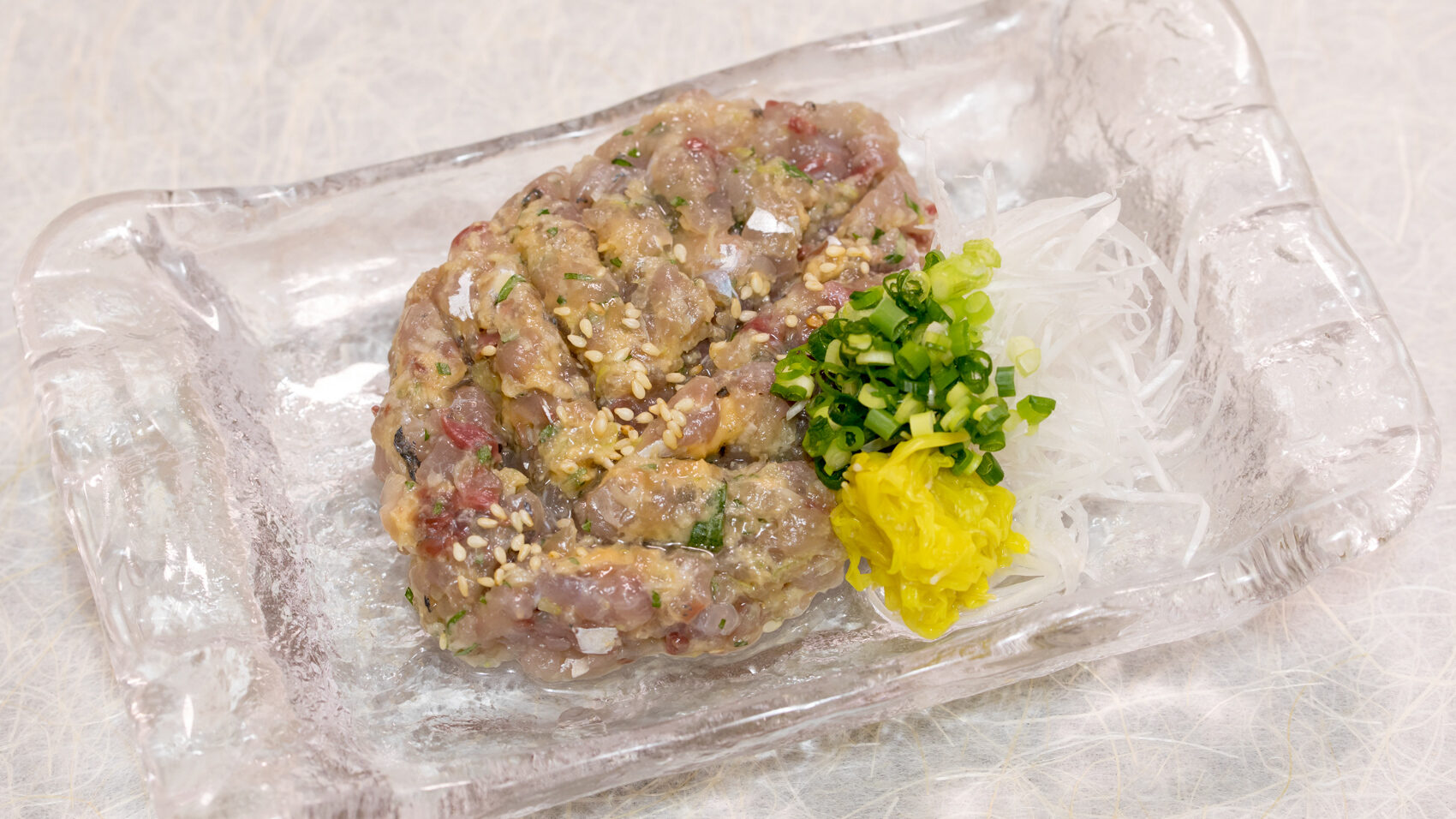
Get ready to discover Namerou, a zesty and flavorful dish with deep roots in the coastal areas of the Boso Peninsula in Chiba Prefecture. Legend has it that fishermen in Kazusa and Awa (southern Chiba) created this dish as a way to prepare freshly caught fish right on their unsteady boats. Instead of soy sauce, they used miso to avoid spills on the rough seas. The name “Namerou” is said to come from how delicious it is – so good you’d want to lick the plate clean! It also implies the sticky texture that makes it hard to eat without really going for it.
Dish Name: Namerou
- Region / Location: Chiba Prefecture
- Primary Area of Tradition: Coastal areas of the Boso Peninsula
- Main Ingredients: Horse mackerel (Aji), long onion (Negi), ginger, Japanese basil (Shiso)
How It’s Eaten / Served
Namerou is a type of fish tartare (tataki). It’s typically made with horse mackerel, which is finely chopped and mixed with miso, minced long onion, and ginger, then further pounded until it becomes sticky. While horse mackerel is the most common fish used (available year-round in southern Boso), it can also be made with sardines, saury, or flying fish depending on the season. Over time, as it became a home-cooked meal, other seasonings like Japanese basil (shiso) were often added. Since it doesn’t keep well, Namerou is best enjoyed fresh immediately after preparation.
Cultural Background and Preservation
Born from the practical needs of fishermen on the waters off the Boso Peninsula, Namerou has evolved into a beloved local specialty. The use of miso instead of soy sauce highlights the ingenuity of its seafaring origins. Today, Namerou isn’t just limited to Chiba; it’s enjoyed in households and served in izakayas (Japanese pubs) across a wider region. In southern Boso, the Minamiboso Namerou Kenkyukai (Southern Boso Namerou Research Association), established in 2009 by Kazuyuki Kurihara (the fifth-generation owner of Daitokuya, a restaurant founded in 1869 that preserves the culinary traditions of southern Boso), is actively working to promote Namerou and another local dish called Sangayaki nationwide. This association, with over 30 participating restaurants and accommodations, focuses on both preserving the traditions and developing new ways to enjoy these regional flavors.
Additional information:
- Aji (アジ): Horse mackerel, a common and popular fish in Japanese cuisine.
- Miso (味噌): A fermented soybean paste with a savory and umami-rich flavor, used here as a key seasoning.
- Negi (ねぎ): Long green onion, providing a mild oniony flavor.
- Shoga (しょうが): Ginger, adding a spicy and refreshing note.
- Shiso (しそ): Japanese basil, an herb with a unique aromatic flavor.
- Tataki (たたき): A Japanese cooking method where fish or meat is lightly seared or pounded. In the case of Namerou, it refers to the pounding of the fish.
- Izakaya (居酒屋): A Japanese-style pub or bar that also serves food.
- Sangayaki (さんが焼き): Another local dish from the Boso Peninsula, often made with leftover Namerou that is grilled or baked.
The information about regional cuisine featured on this website (Piggy's Grandma of Japan) is summarized and adapted from the Ministry of Agriculture, Forestry and Fisheries of Japan (MAFF) website, "Our Regional Cuisines"Additional commentary is provided based on the unique experiences and perspectives of the site's editors.
The copyright for the original content regarding regional cuisine belongs to the Ministry of Agriculture, Forestry and Fisheries of Japan.
The summaries and adaptations published on this site are intended for informational purposes only. Piggy's Grandma of Japan does not guarantee the accuracy or completeness of this information. For the most accurate and complete details, please refer to the original pages on the MAFF website.

